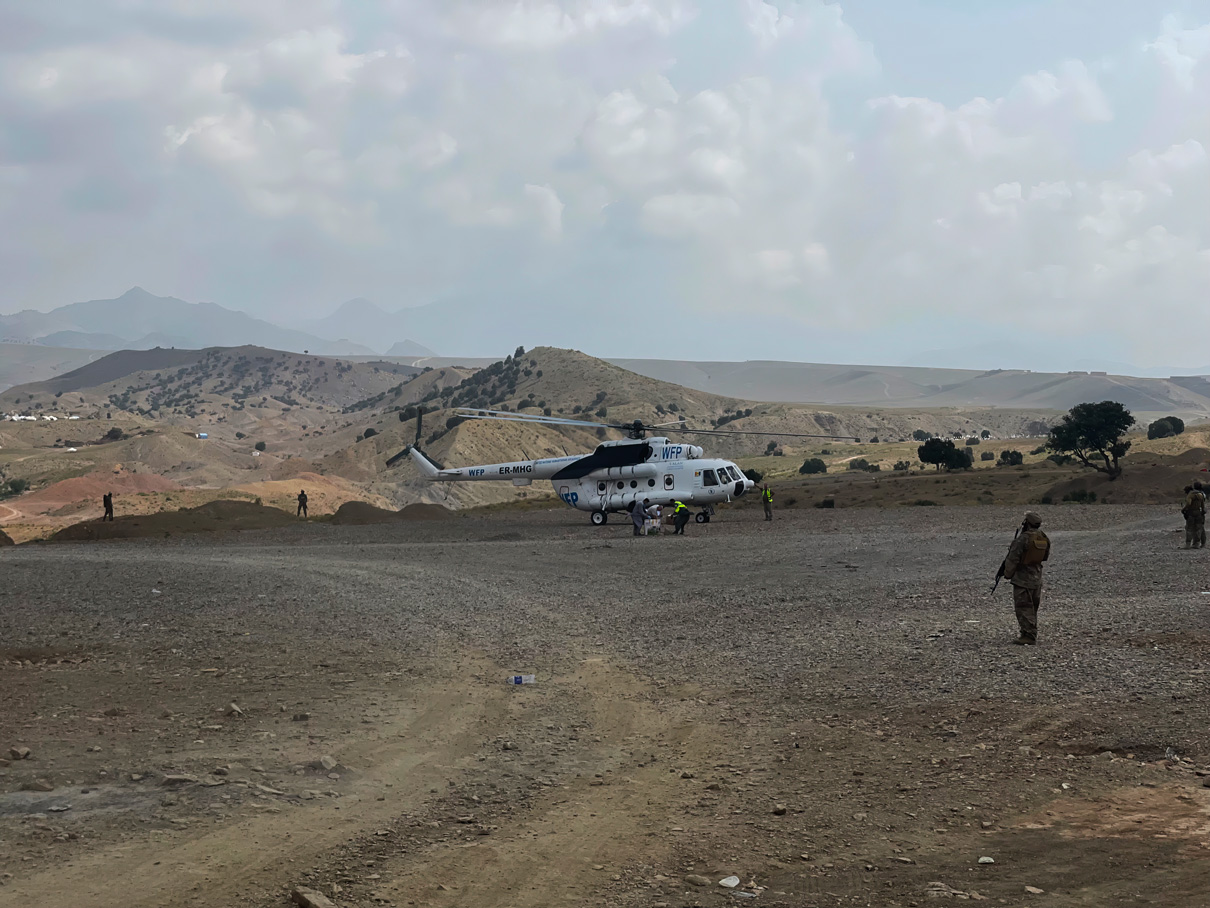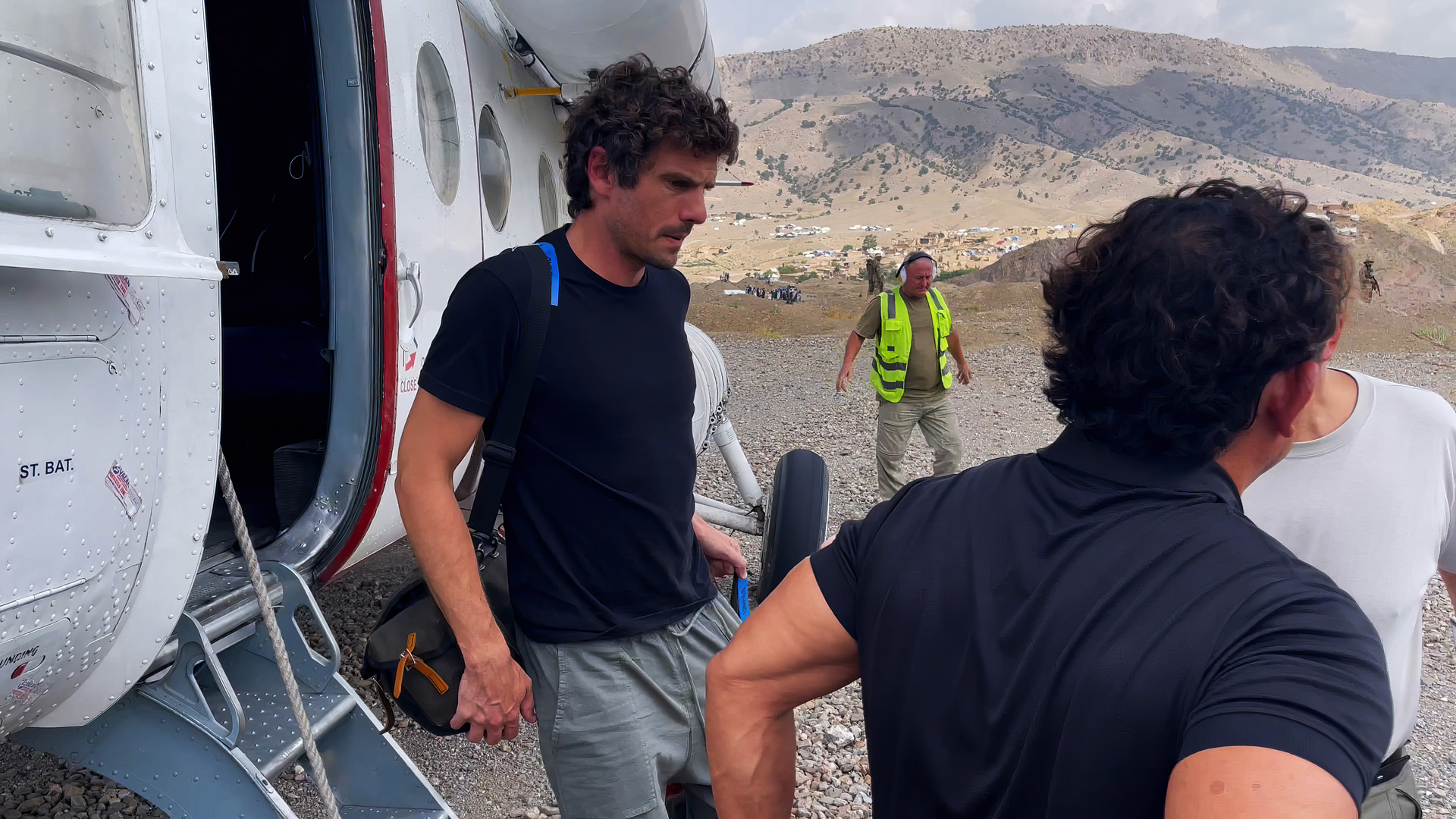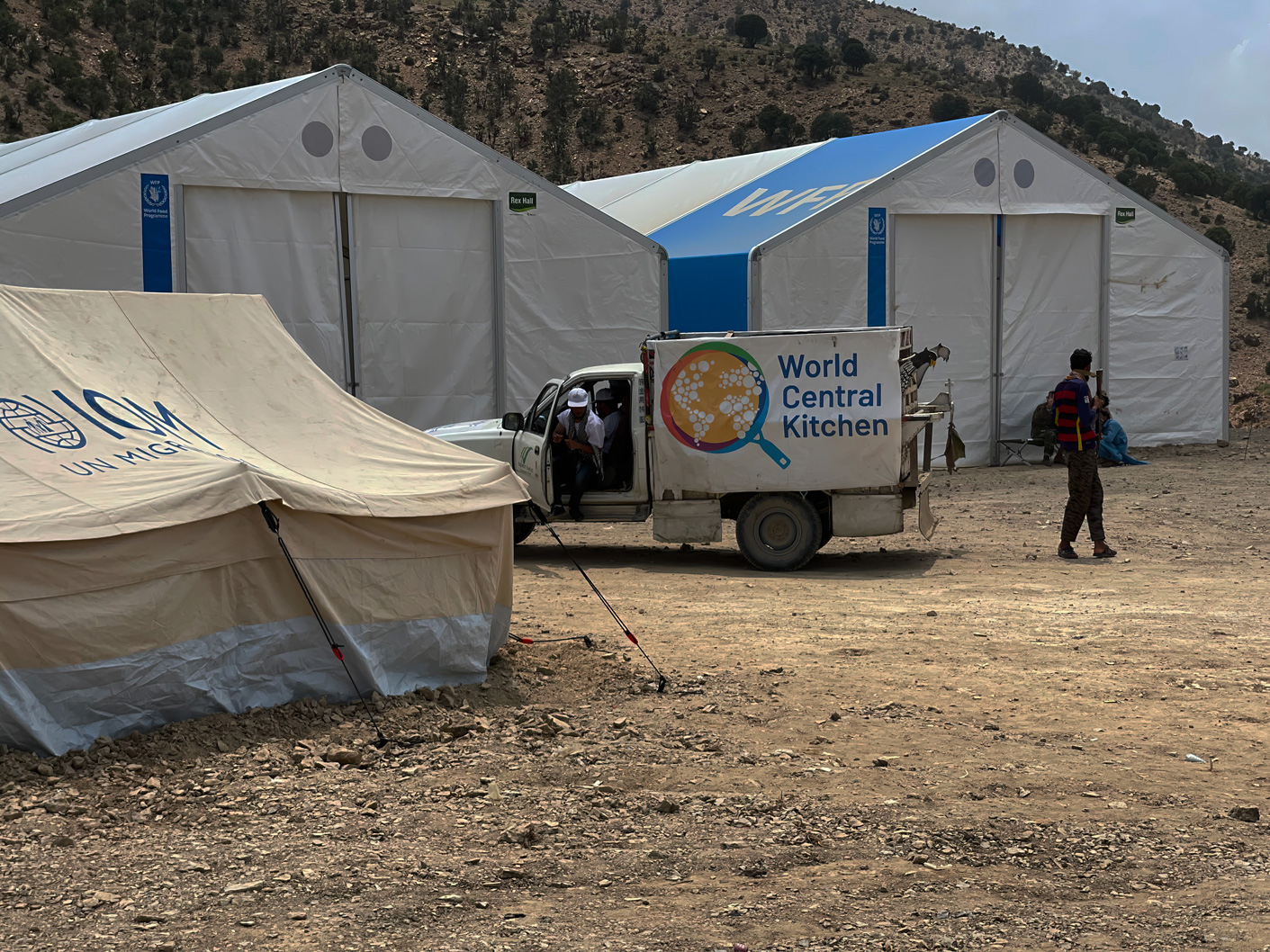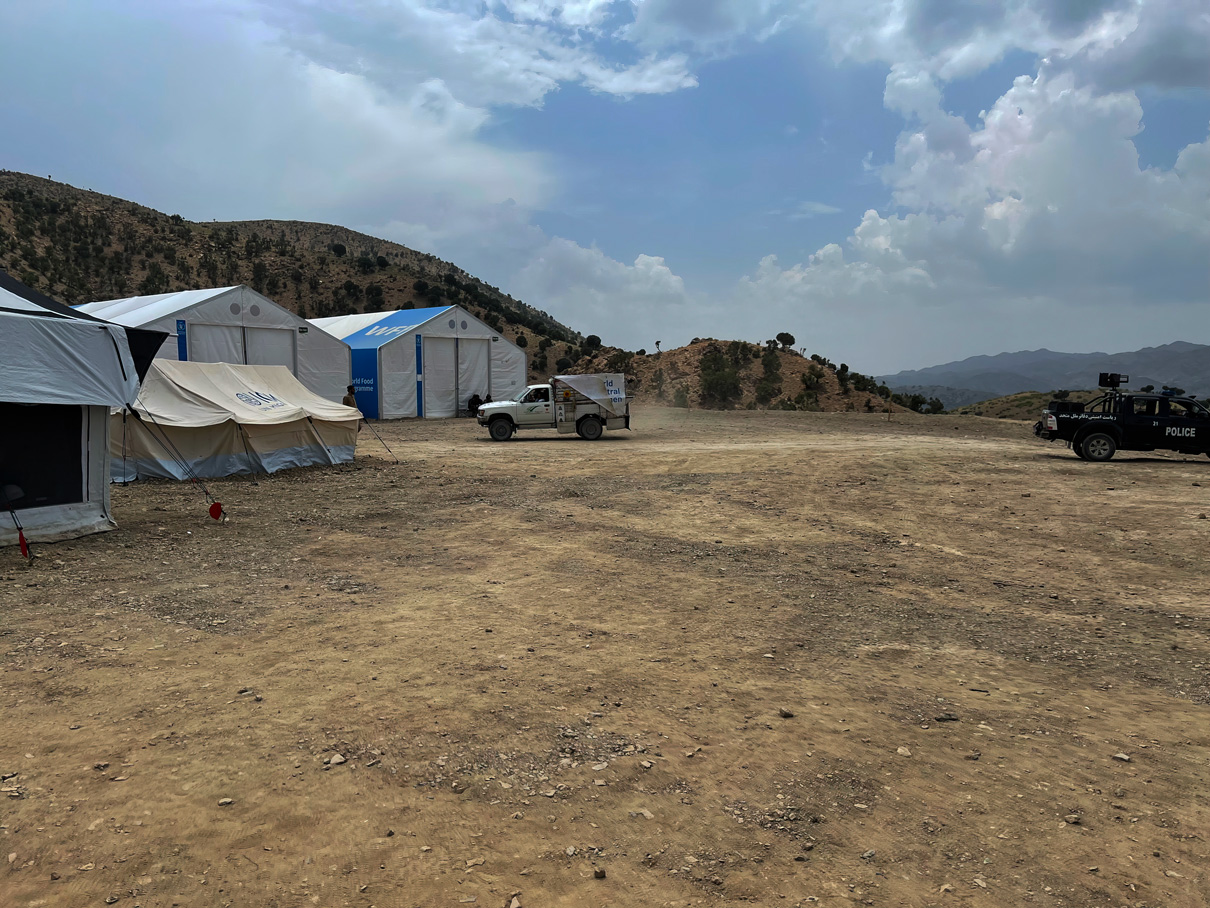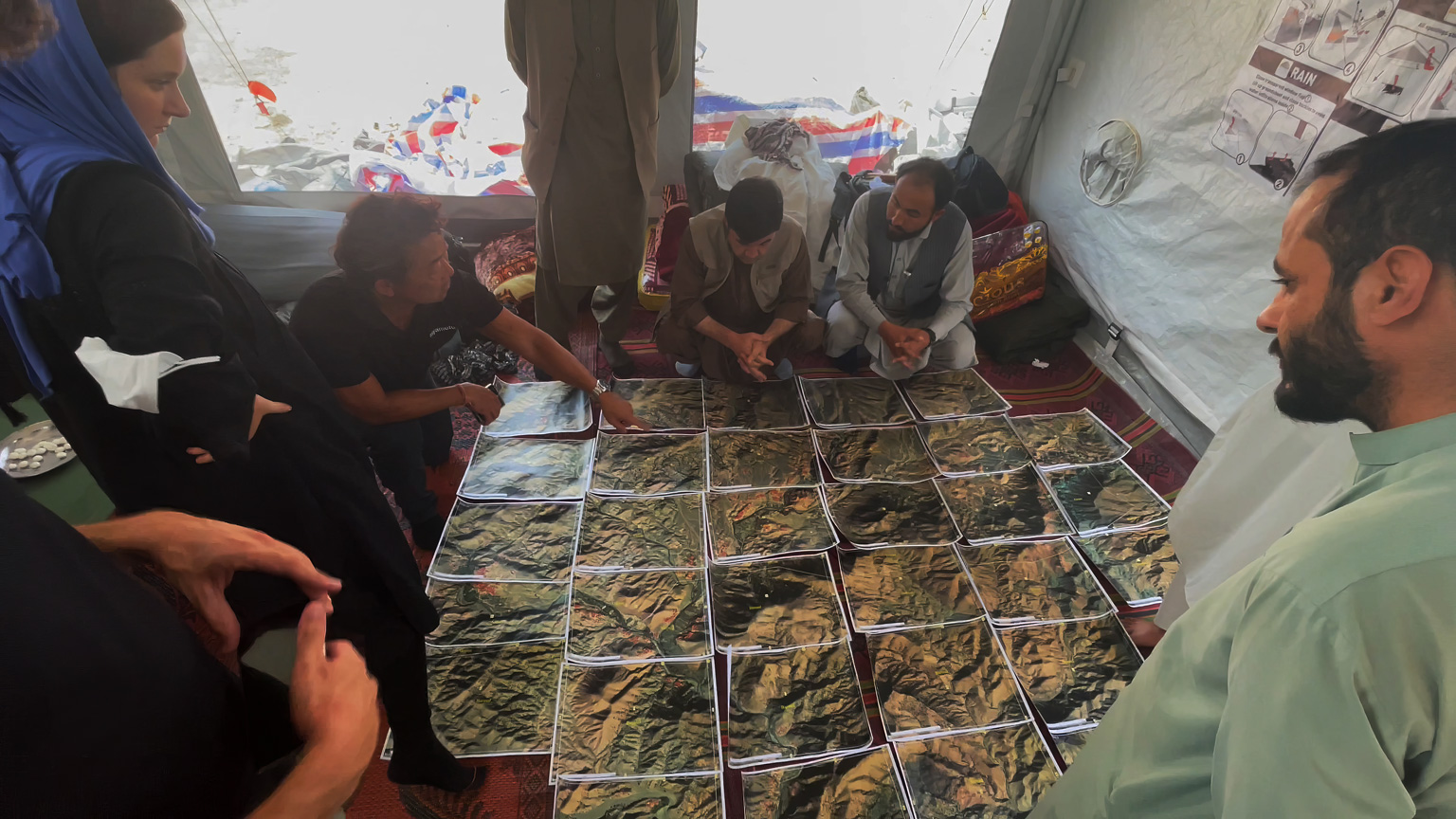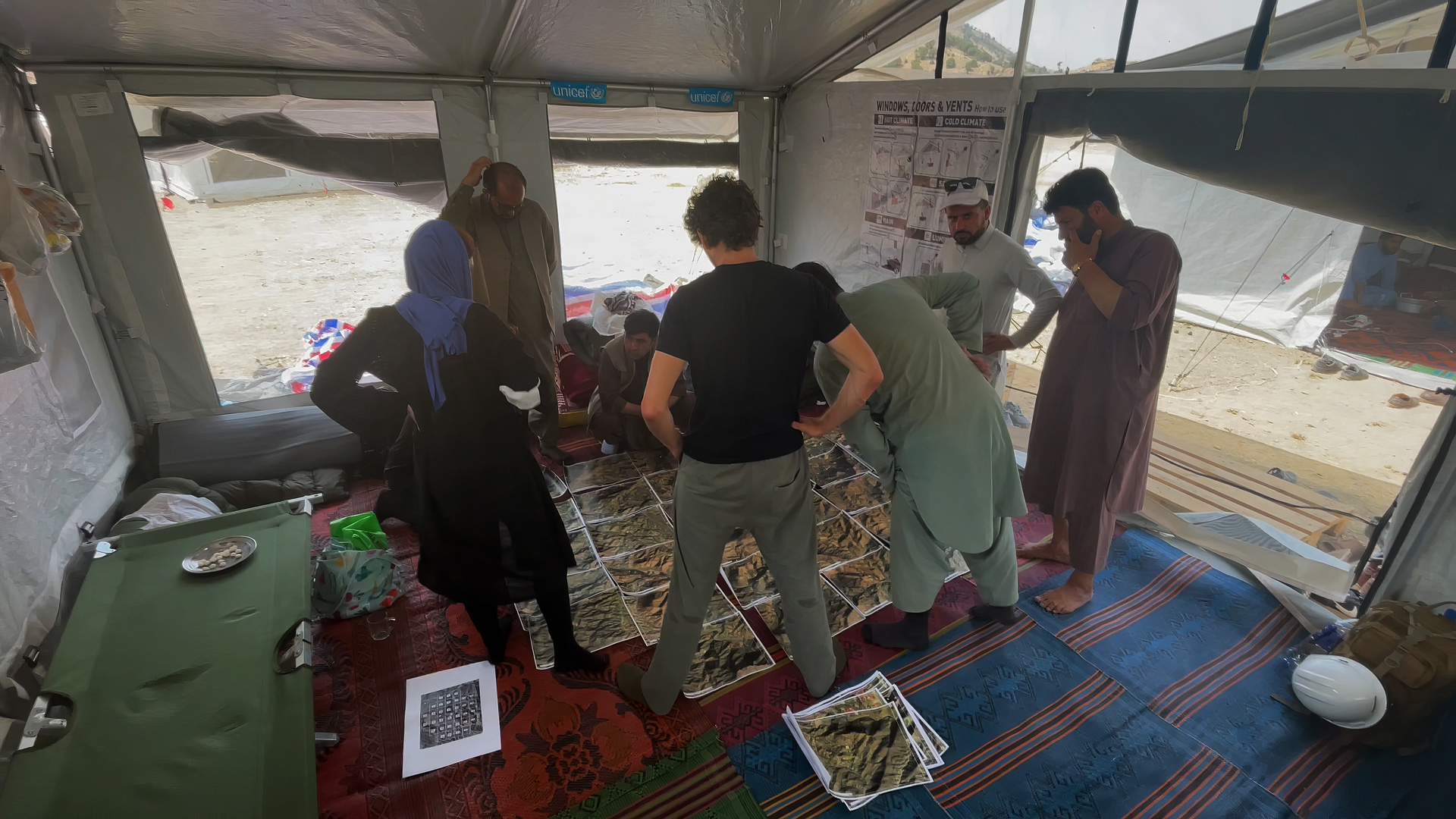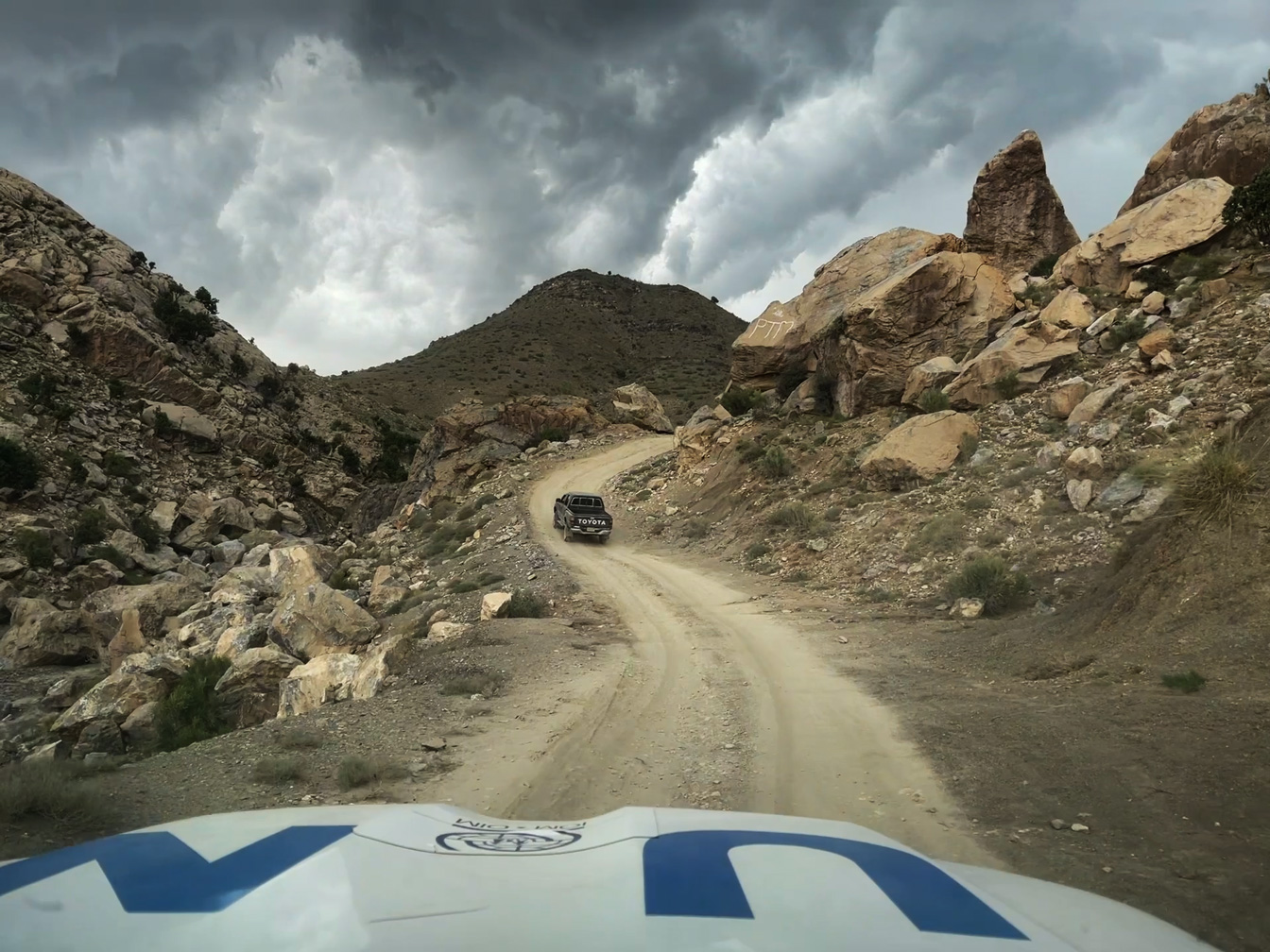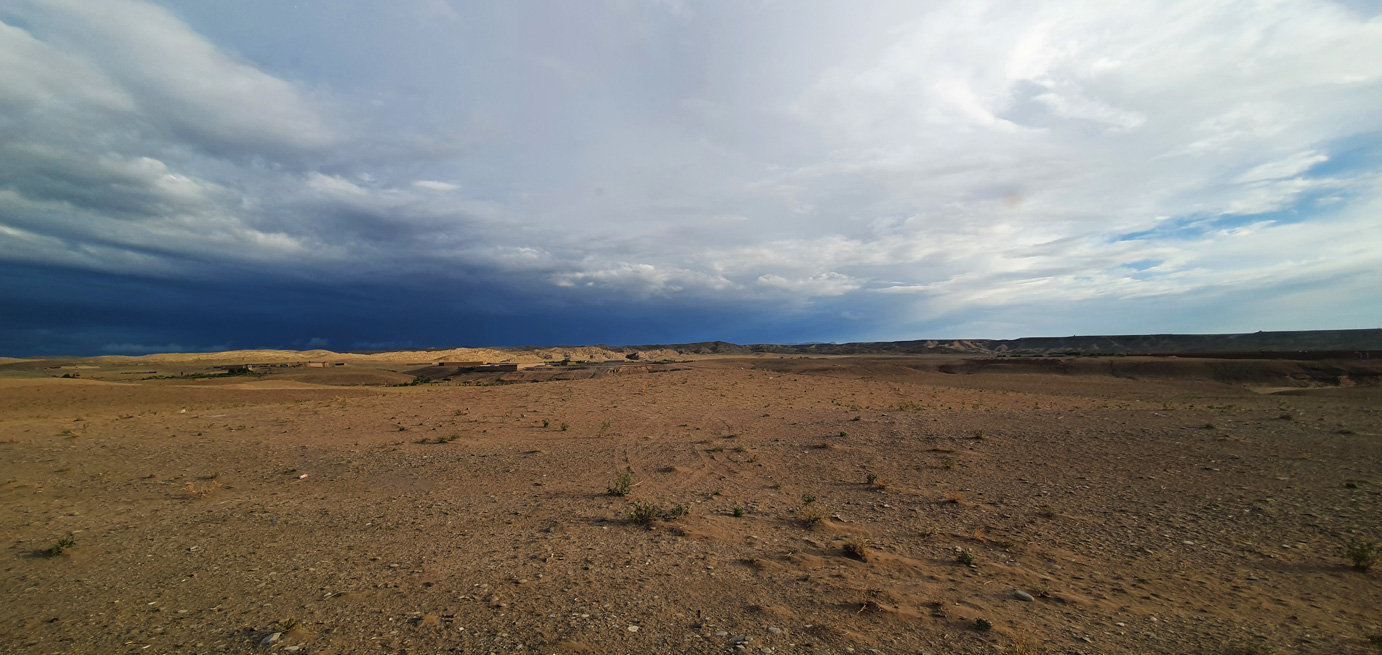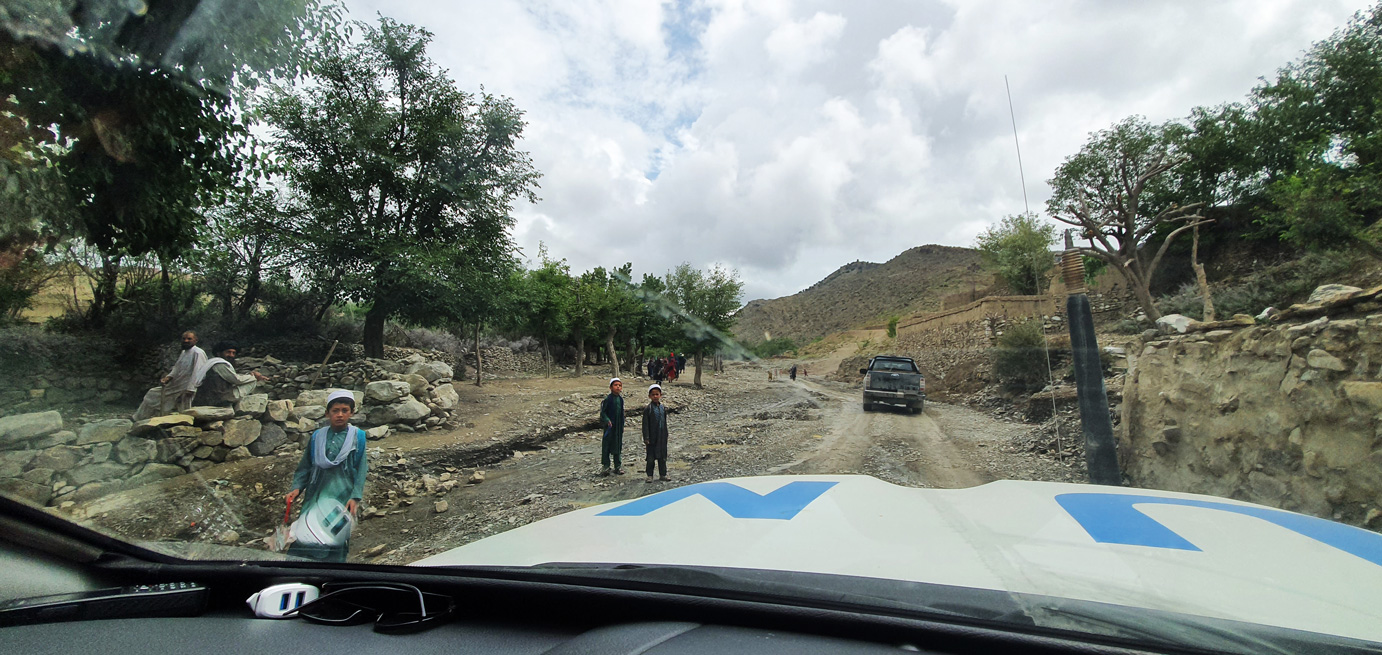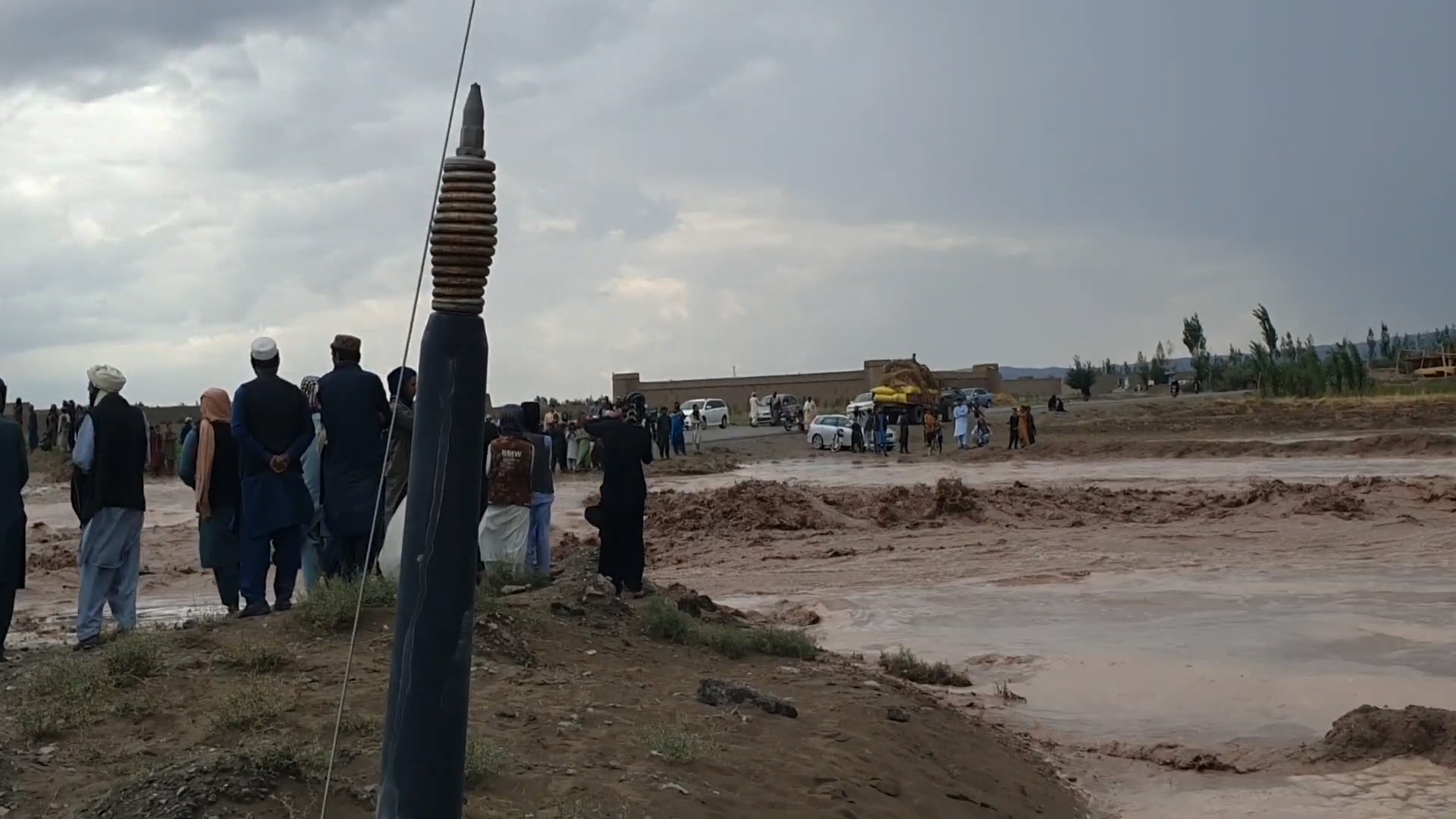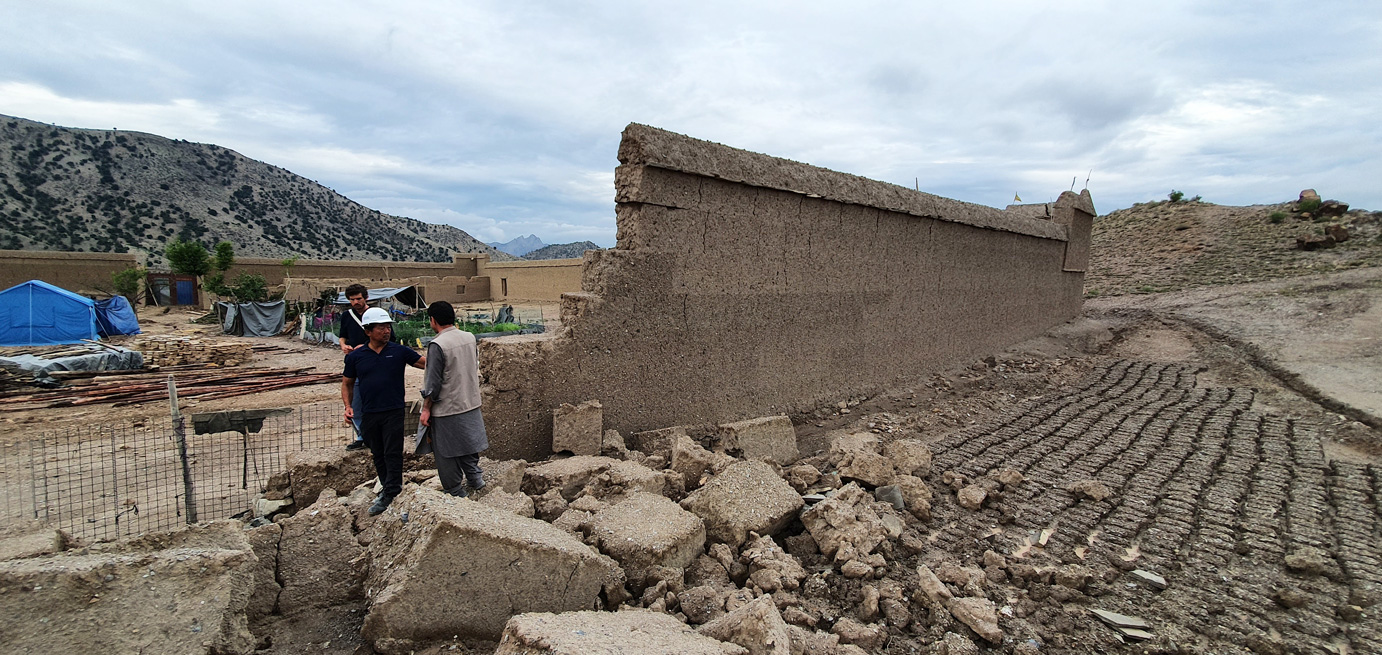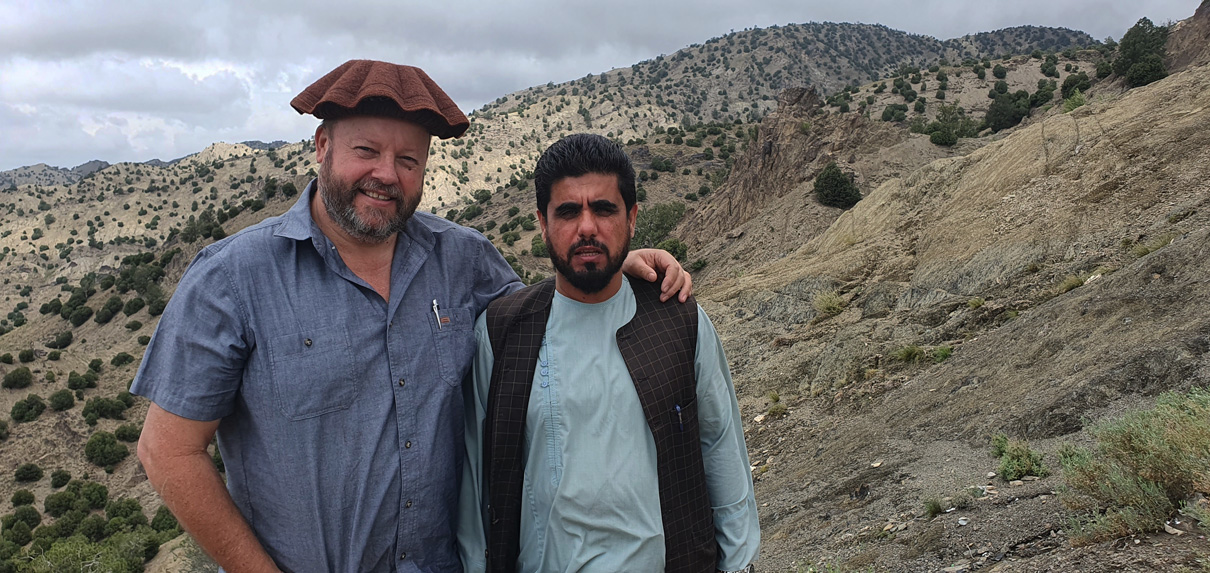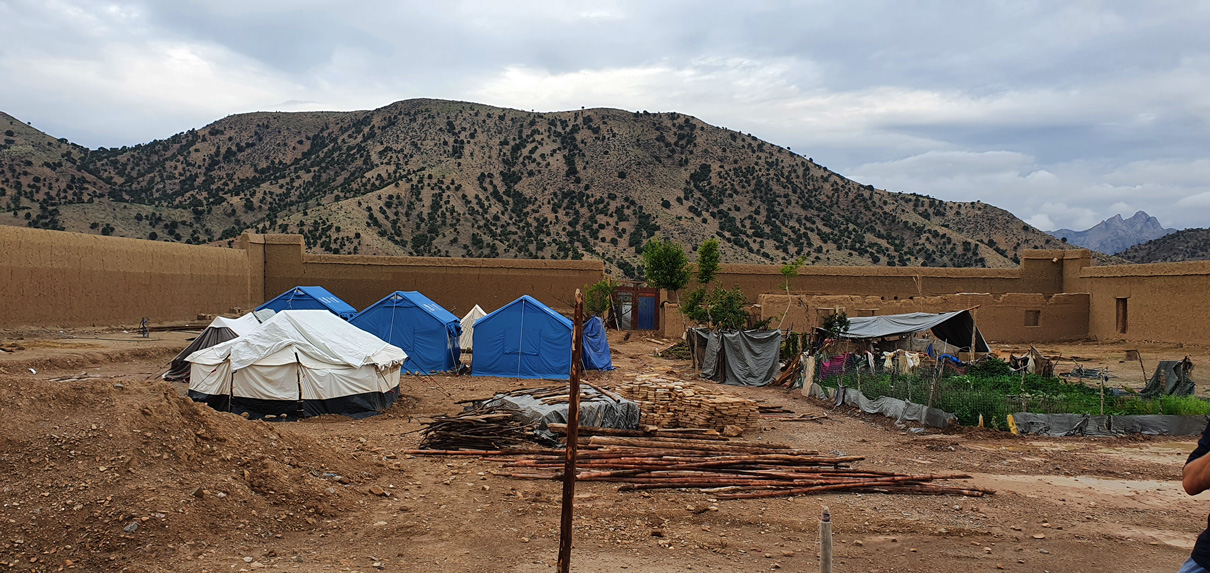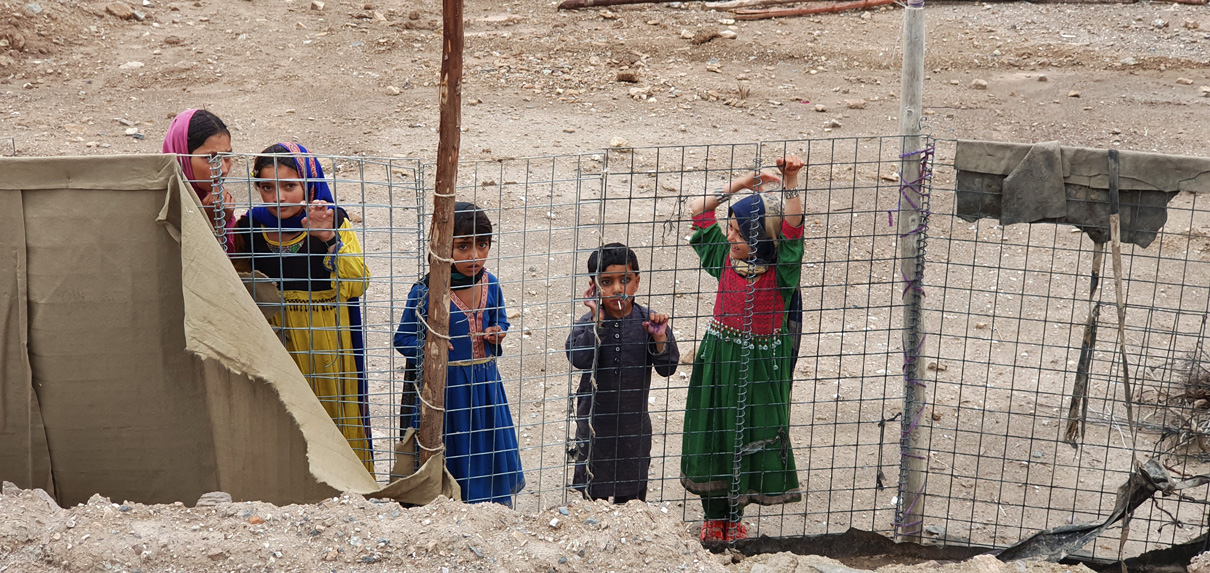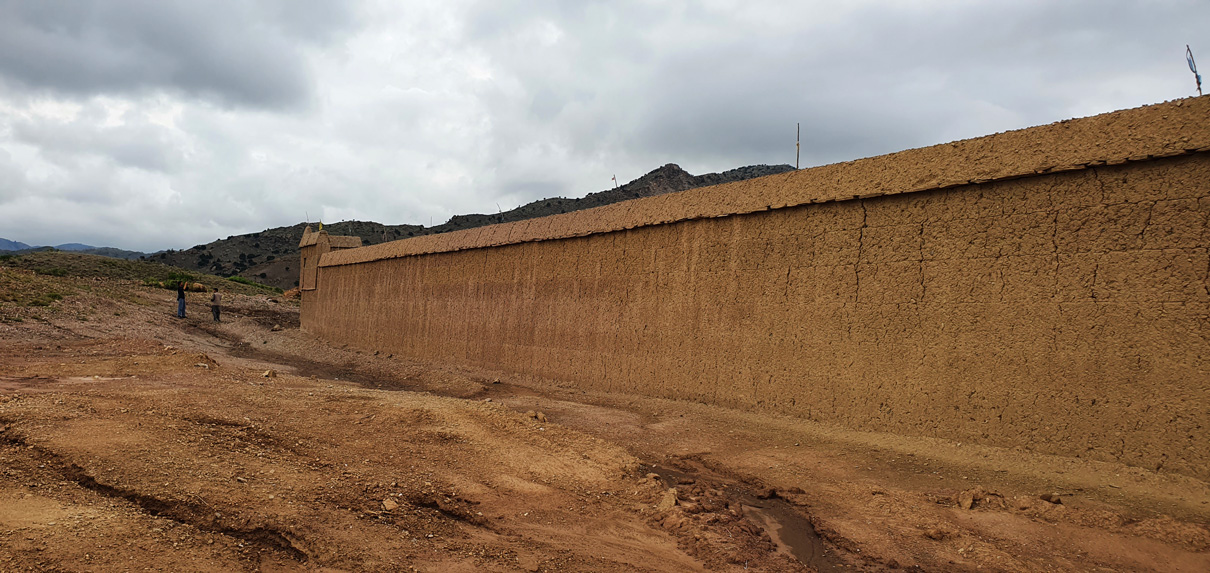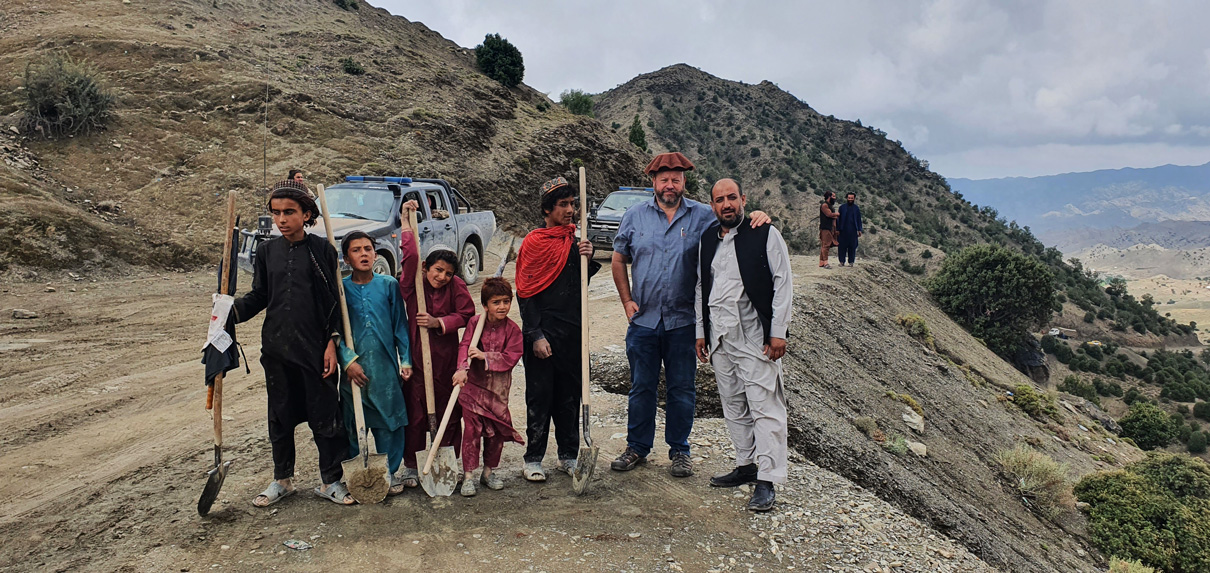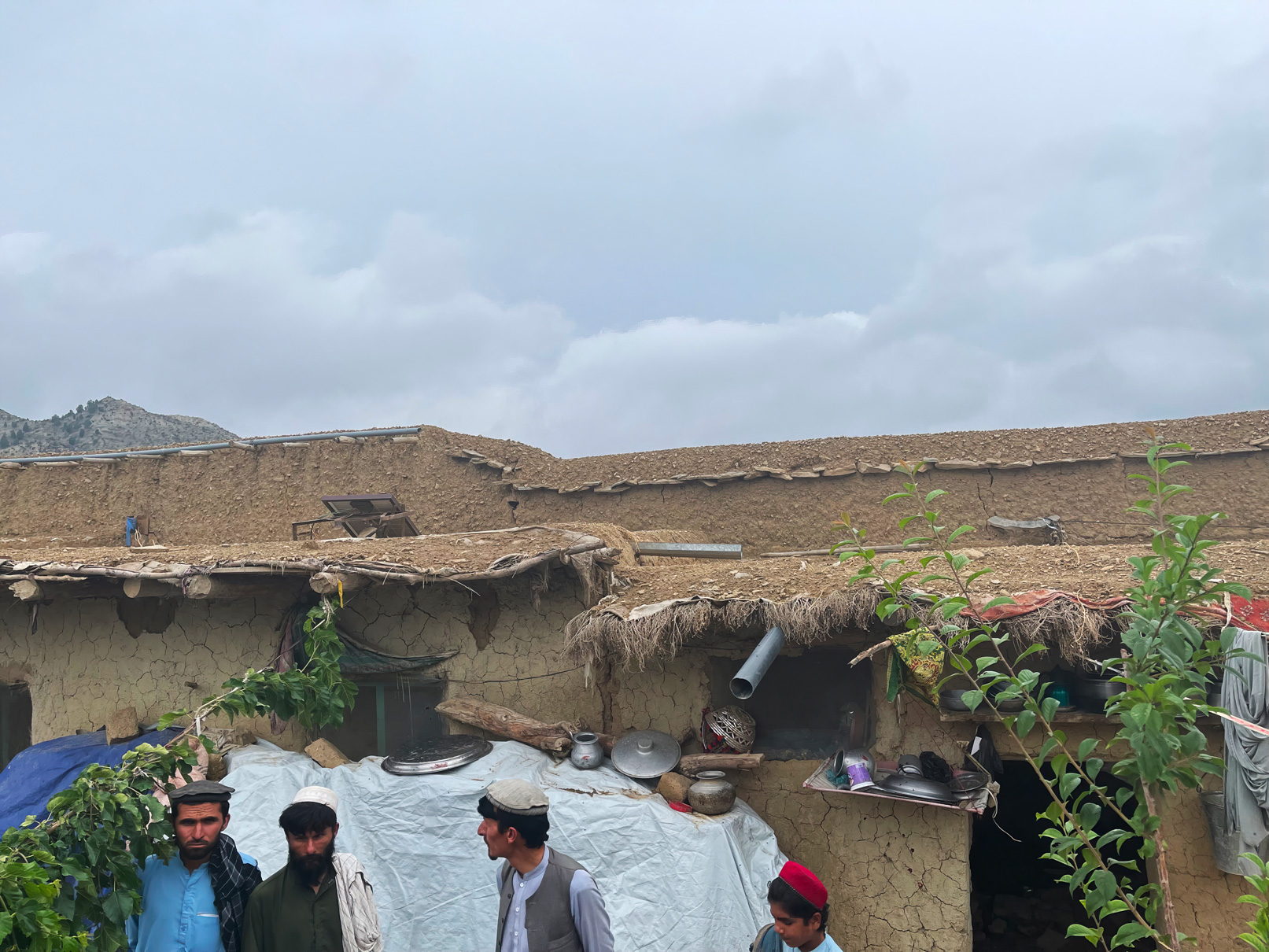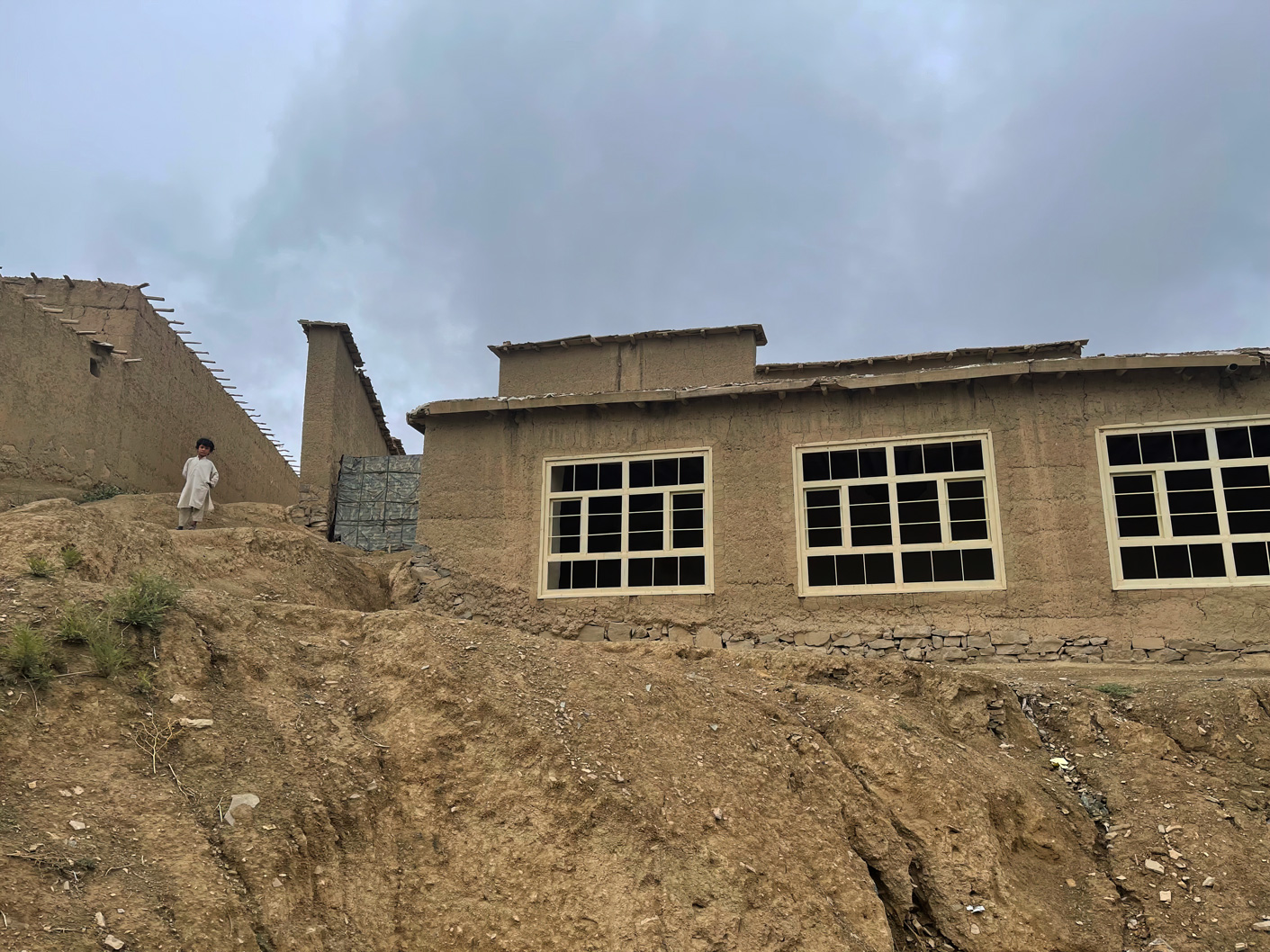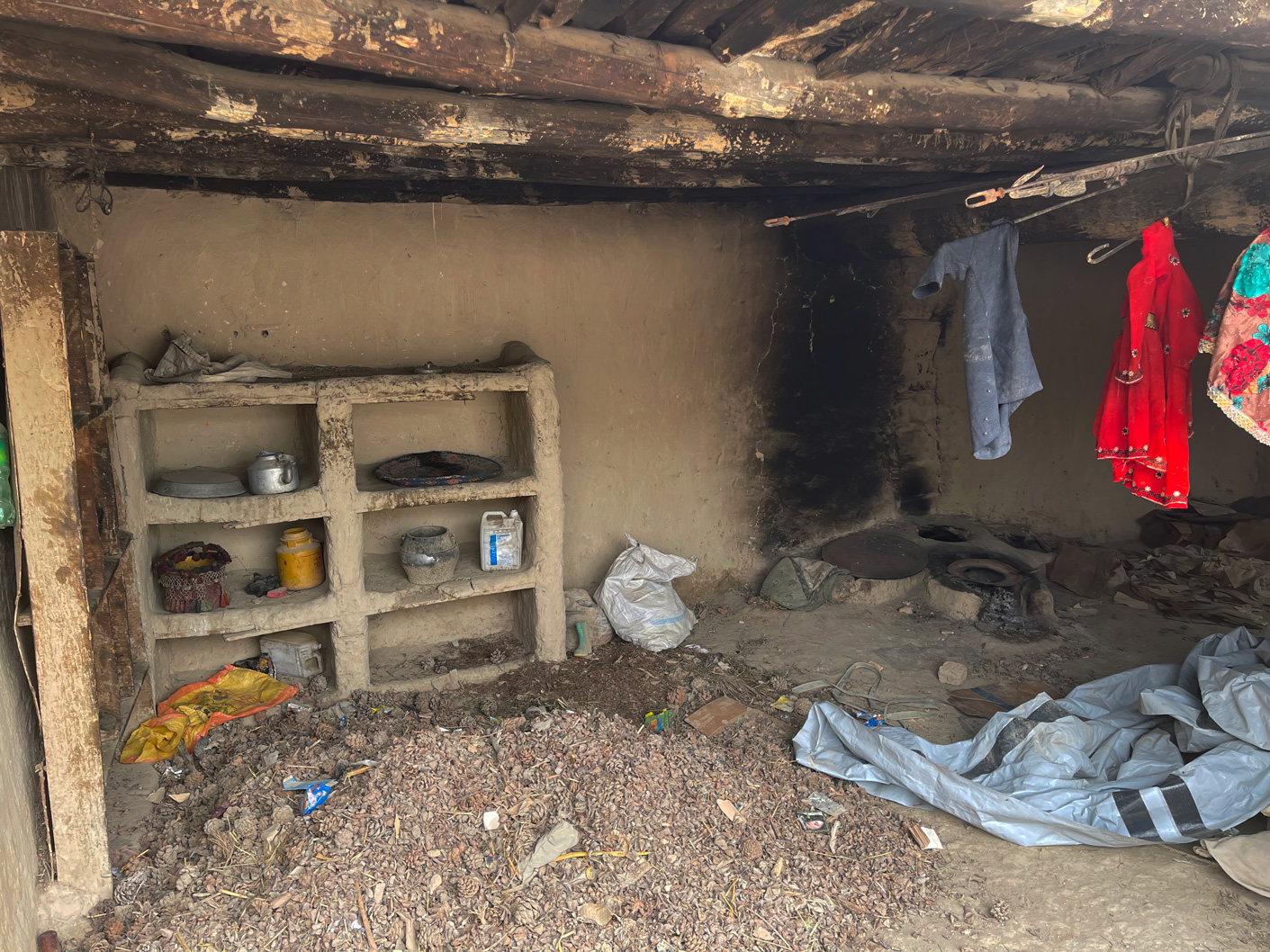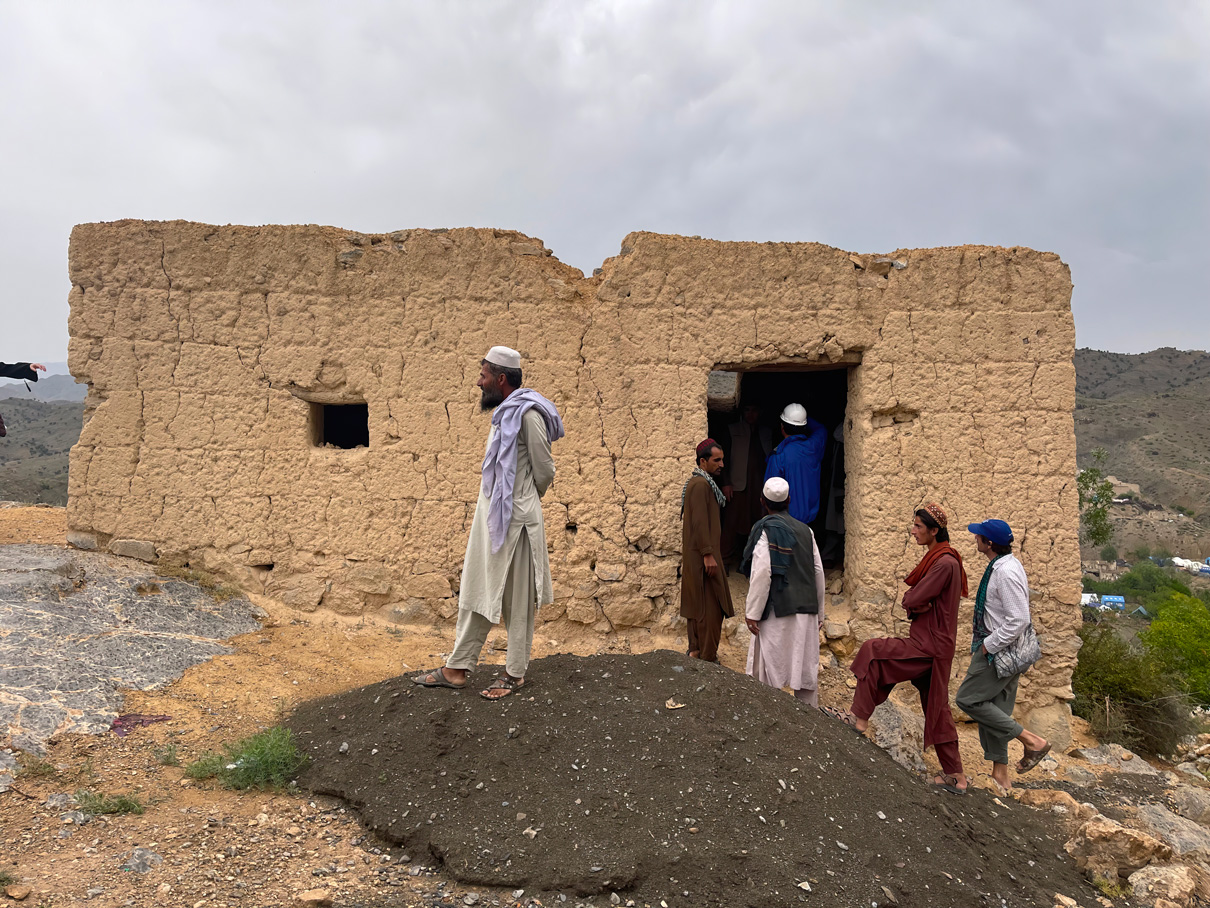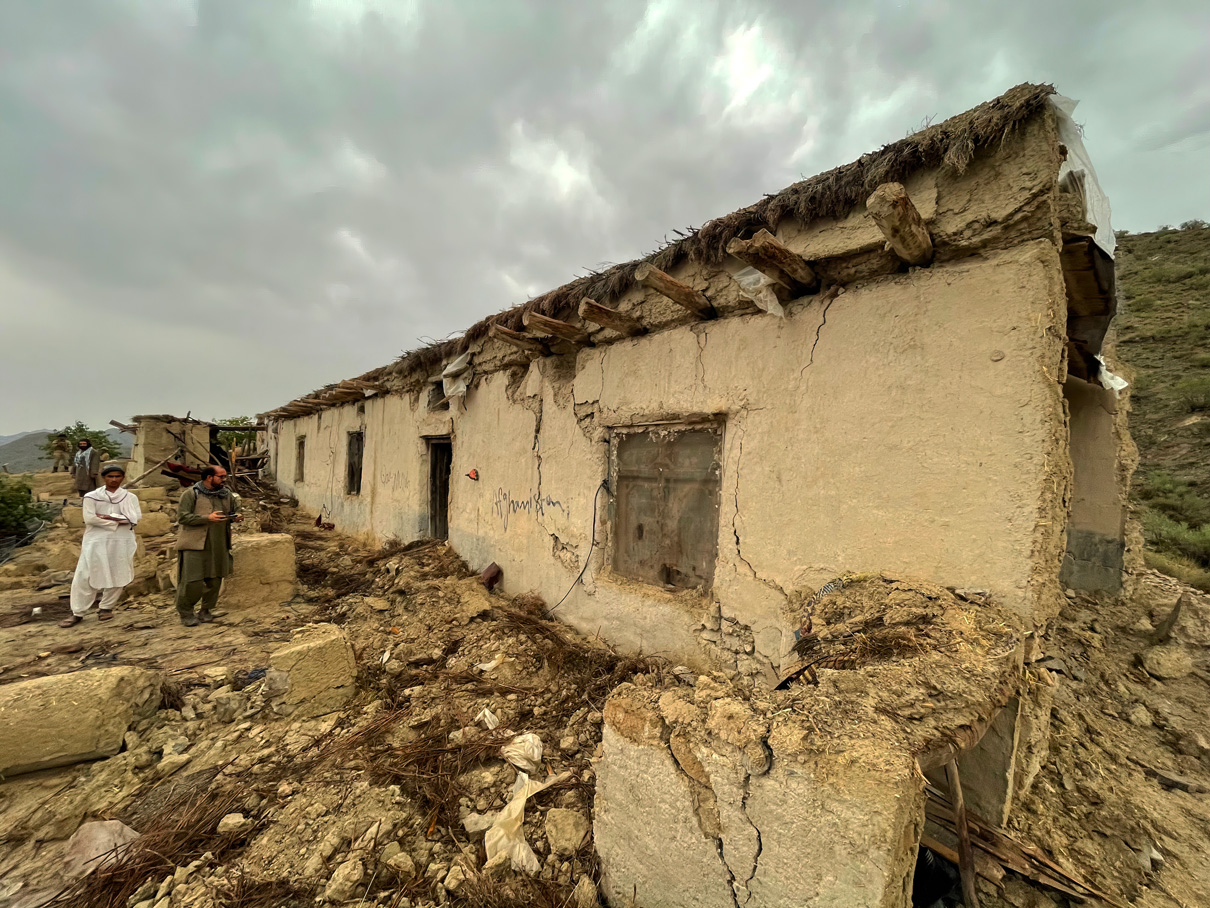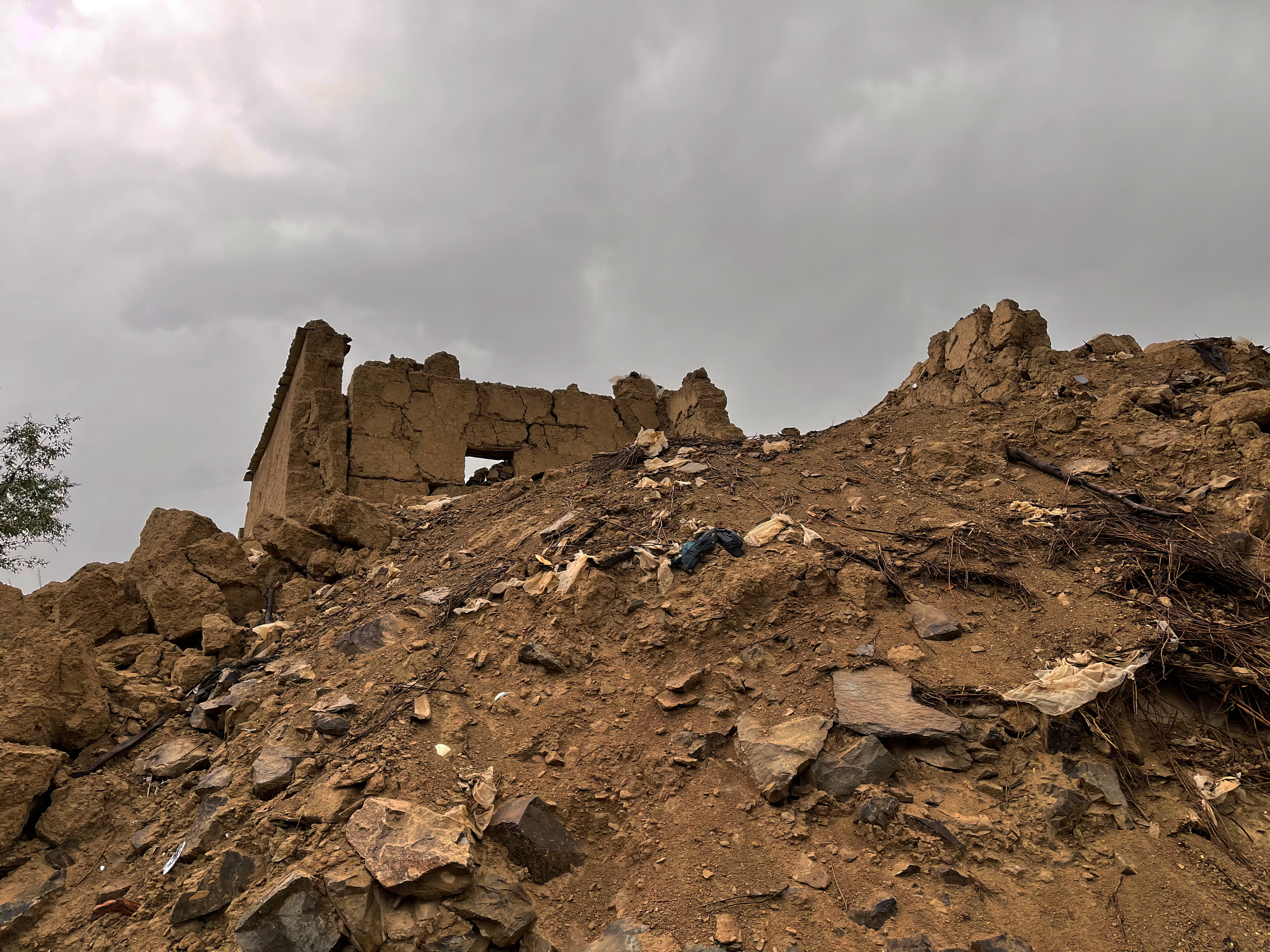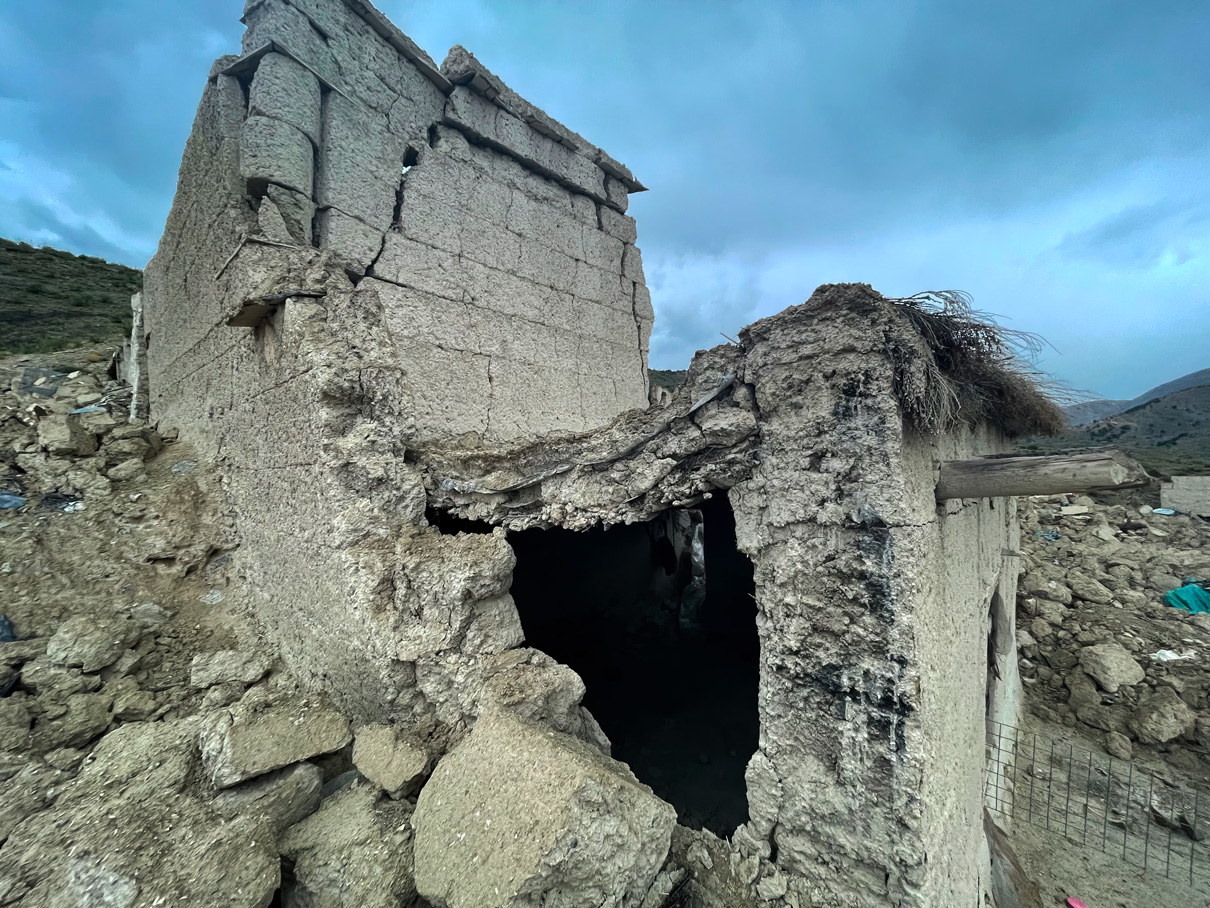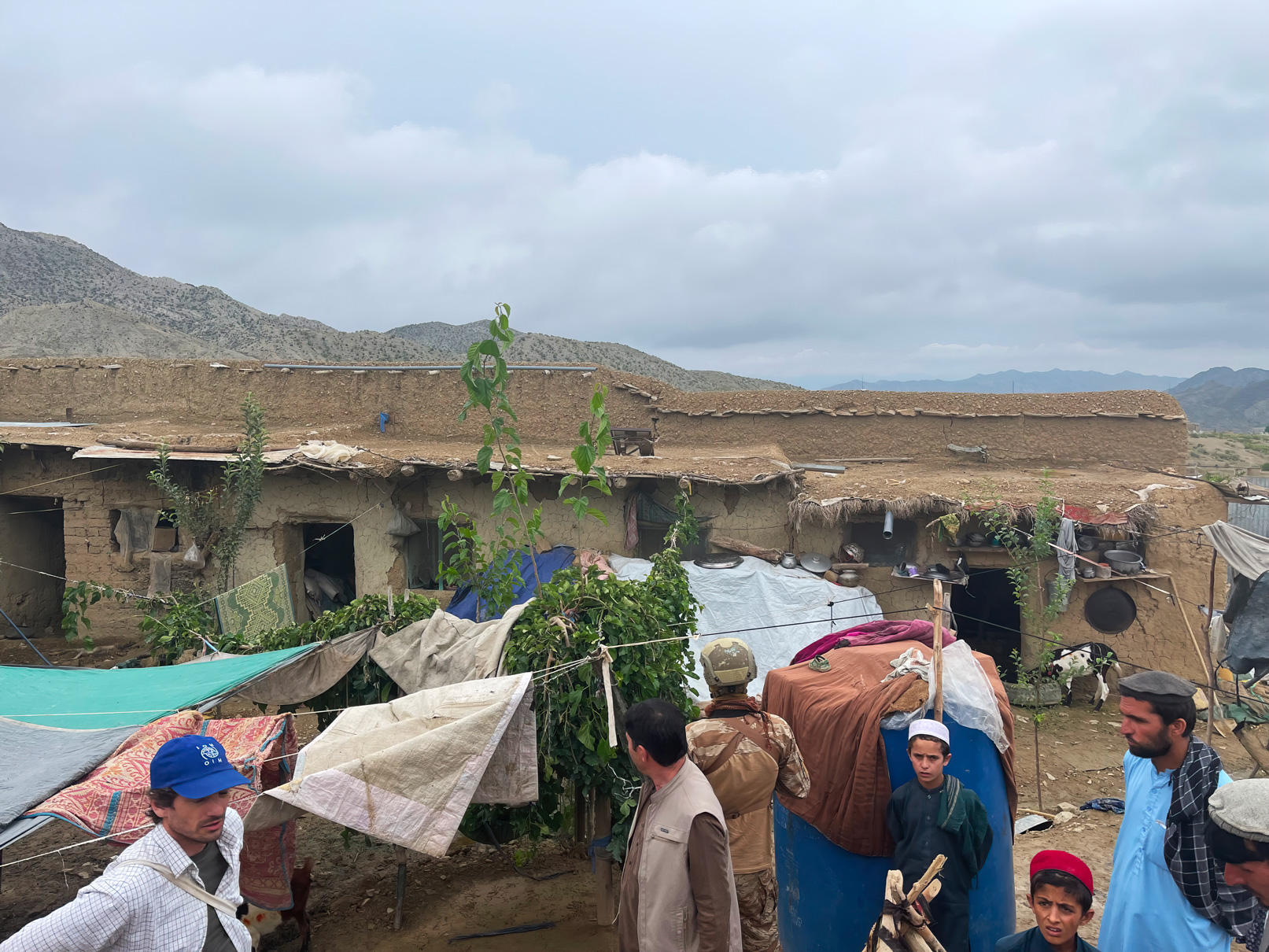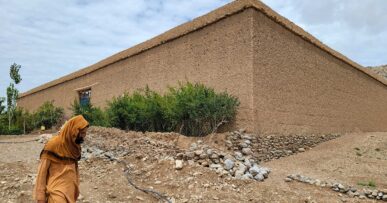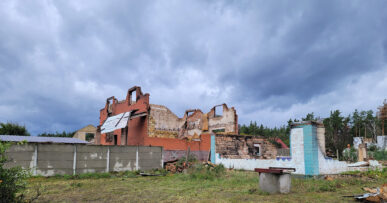- Against All Odds: Afghanistan Earthquake Relief Day 1
- Against All Odds: Afghanistan Earthquake Relief Day 2
- The War Against Time: Afghanistan Earthquake Relief
July 21th 2022
5:30 AM
-Kabul Airport-
Our team is on board a 1970s-era Soviet-made cargo helicopter provided by the UN. Besides us, Laila and Amir from the IOM/UN have joined us for this mission. Also, Zadran, our Afghanistan program manager to whom we have introduced a couple of days ago through our contact in the US, is with us.
The last few days have been hectic at the UN base where we live inside steel containers. We have met engineers who had just come back from the field. We have met decision-makers of the UN system. And based on their inputs, we have developed a housing reconstruction and repairability assessment app. Our India team was a great help.
We are planning to sample a few hundred houses in the next four days. Then we will use the data to interpolate the total housing reconstruction needs. This is a critical relief effort for people in the disaster zone. We need to identify and repair as many houses as possible before winter comes in this mountainous area.
Inside the helicopter it is hot and humid. The roar of the blades is deafening. We are heading to the Pakistan border district of Barmal.
9:30 AM
-Barmal Airstrip-
Our heli is landing at the Barmal Airstrip. I can see mainly black garbed de facto authorities (DFA) lined up along the airstrip. You could identify them from miles away by their distinctive clothing and long hair. Now they are here for our protection. Ironic, isn’t it?
As our helicopter approaches touchdown, dust billows, clouding my vision.
10:00 AM
-UN Hub Camp Barmal –
After landing, we enter the camp next to the airstrip. I see a couple of dozen large white UN tents. Some of these are sleeping quarters and others are offices. Each tent’s floor is covered by traditional carpeting. Bordering Pakistan, this site used to be an old US base.
We are greeted by an Afghan manager, and he escorts us to one of the tents. Two of our national engineers join us, Arif and Arian. They are old colleagues of Zadran and veterans of shelter/housing solutions in conflict zones.
As we sit on the floor, a tray with local green tea and a mint-like candy is placed before us. The tea’s aroma lingers with a hint of spice, but the candy is being bothered by several flies. They are delicious, though. And as we continue to enjoy the tea and candy, we discuss traveling logistics over maps.
12:30 PM
Lunch is served on a floor mat. It consists of a small plate of potato curry and flatbread. The curry sauce is thin, but the taste is great as this is the first meal of the day. Mark says he is skipping to see how my stomach reacts to the food. A cholera outbreak is spreading in this disaster area.
2:00 PM
Under the scorching sun, we are all loaded up in UN armored off-road vehicles. We are divided between two cars and led by heavily armed DFA guards riding on a Toyota pickup. We drive through dry sand riverbeds and mountain roads. The scenery reminds me of parts of Nevada. High ridges and deserts. In this dry landscape, we occasionally drive through small settlements. I mostly see adult men wearing traditional garb. Many of these wear beautiful traditional hats that look like lampshades. I also see little boys and girls with colorful clothes running around everywhere; very rarely I see any women.
2:45 PM
Our convoy arrives at the destination. DFA spread out to secure the perimeter. The last time I saw anything like this was in Haiti after the 2010 earthquake. The US Army’s 82 Airborne Division had employed a similar maneuver to protect our Damage Assessment Team. The DFA move around hilly terrain rapidly and with ease. One of our engineers whispers in my ear that in the past he used to pretend that he was not an engineer, to avoid being targeted. He says, “There are no more issues like that. This is probably the most peaceful time in my 50 years of life. But there aren’t any jobs, and we are struggling for food every day. Kit, when do you think the international community will open its doors for us?”
3:05 PM
We are entering a devastated village on top of a steep hill under heavy thunderstorm rain. The first thing I notice is that the mud-made walls and roofs are now flattened on the ground like pancakes. Some walls still stand, but these are rare. The village itself is a large walled compound of approximately 300m by 100m.
We are greeted by six of this settlement’s elders. Among them is their spokesperson, a young intelligent-looking fellow with sharp brown eyes, a dark complexion, and a skinny nose. He wears his hair long and the same traditional hat I saw earlier. He speaks softly. “I lost 18 of my family members to this earthquake. I lost everything, and I have none. We’re living in small UN tents and have no idea what tomorrow holds.”
I scan through the area. There are broken villages and a city of white tents next to them. I notice there are not many international NGOs here. International sanctions and governing uncertainty make it difficult for private nonprofits to show up.
Our team and the elders walk over the rubble, followed by many kids. The children are cheerful and friendly, even in such adverse conditions. Specks of light-colored hair and blue eyes catch my eye. Over millennia of migration, and people here now have Asianic, Caucasian and Arab looks.
4:15 PM
We reach the first collapsed heap of mud. An elder points at the heap and says in heavily accented English, “This is where eight kids died, including my mother.” I don’t know what to say except, “I am sorry.”
My job is to identify the means for better reconstruction methods by using traditional methods. But, seeing the complete collapse of all these houses, I cannot even tell how these mud houses were constructed. My heart grows heavy as thunderstorm rain starts pouring over us.
6:10 PM
In the next village, we are entertaining a large compound that is intact. The style of the structures reminds me of middle-aged European fortresses but made of clay mud. The boundary mud walls are about 15 feet high and 20 inches thick. It is an impressive, imposing structure. There are small rooms made of thick clay mud walls and layered mud roofs. These rooms are attached to the inside face of the boundary walls. The thick walls and roofs function as thermal insulation for the structures.
I see distinctive characteristics in the construction methods used on these structures. First, here the clay mud roofs are much thinner, about 12 inches. The collapsed structures had roofs that were around three times thicker. These walls are also made of clay mud, but they specifically use plaster-like materials on the surface to protect the wall interior from rain. Furthermore, I noticed a fair amount of small sharp aggregate in the mud bricks. The collapse ratio of this village is probably one-tenth of the others. I see some hope here. We need to dig up this evidence of local good practices over the next few days.
As the red sun sets beyond the horizon and the rain dries out, we hop onto our off-road vehicle and drive off.
7:30 PM
Mark, Jago, Fiona, and I decide to stay in the same large tent. This UN hub camp has entirely local aid workers, reaching a hundred; we are the only non-Afghans here. I think Fiona is the only woman, too, hence why she has no one to room with. We asked our camp manager if we could stick together, following the advice of our security back in Kabul. Fiona wears a head scarf and covers her skin, leaving no spots exposed when we are out of the tent to respect the culture and tradition. But it is not easy in this weather.
Behind these collapsed walls and inside the compounds were the only places where women could roam free. Now they are confined to small tents. I can see that it is critical to reconstruct these compounds in a safer matter as soon as possible.
8:30 PM
We eat dinner on the tent floor. It consists of spiced rice, stewed okra, and flatbread. I think Afghan food is simple but delicious.
We all collapse on our cots as soon as we finish eating and sleep the deepest of sleeps into the night.
